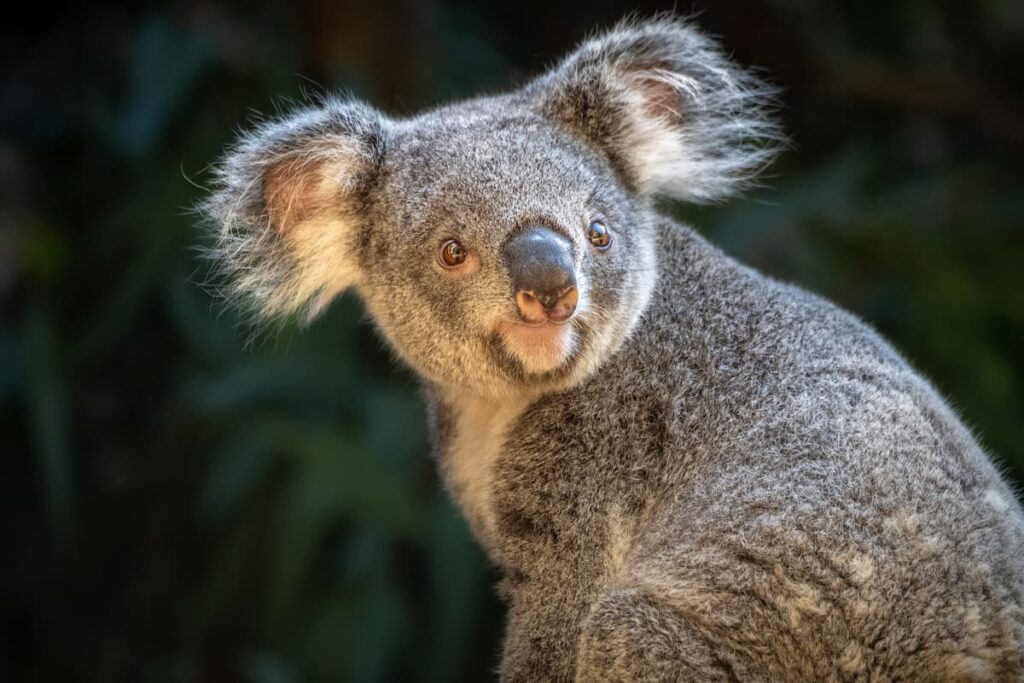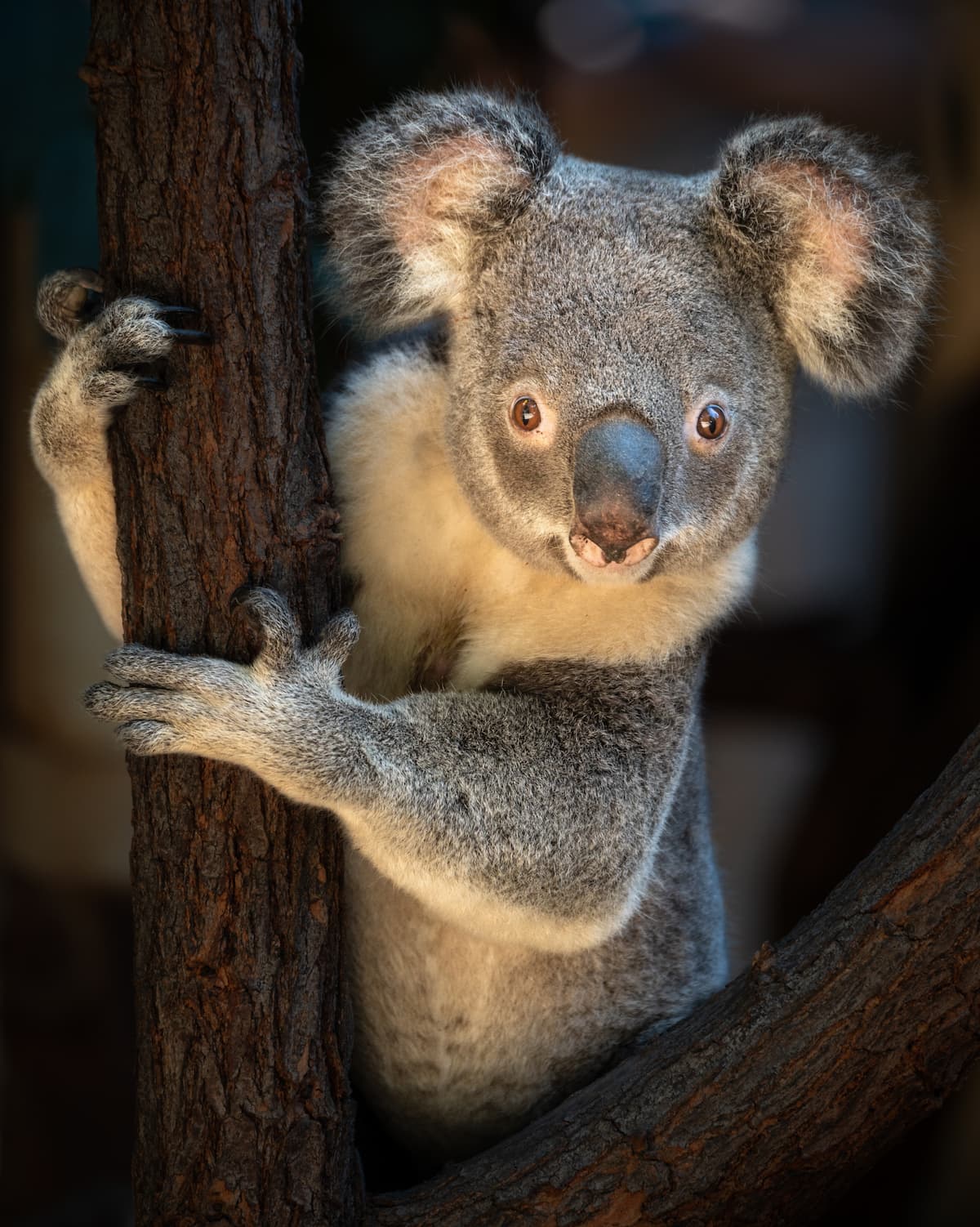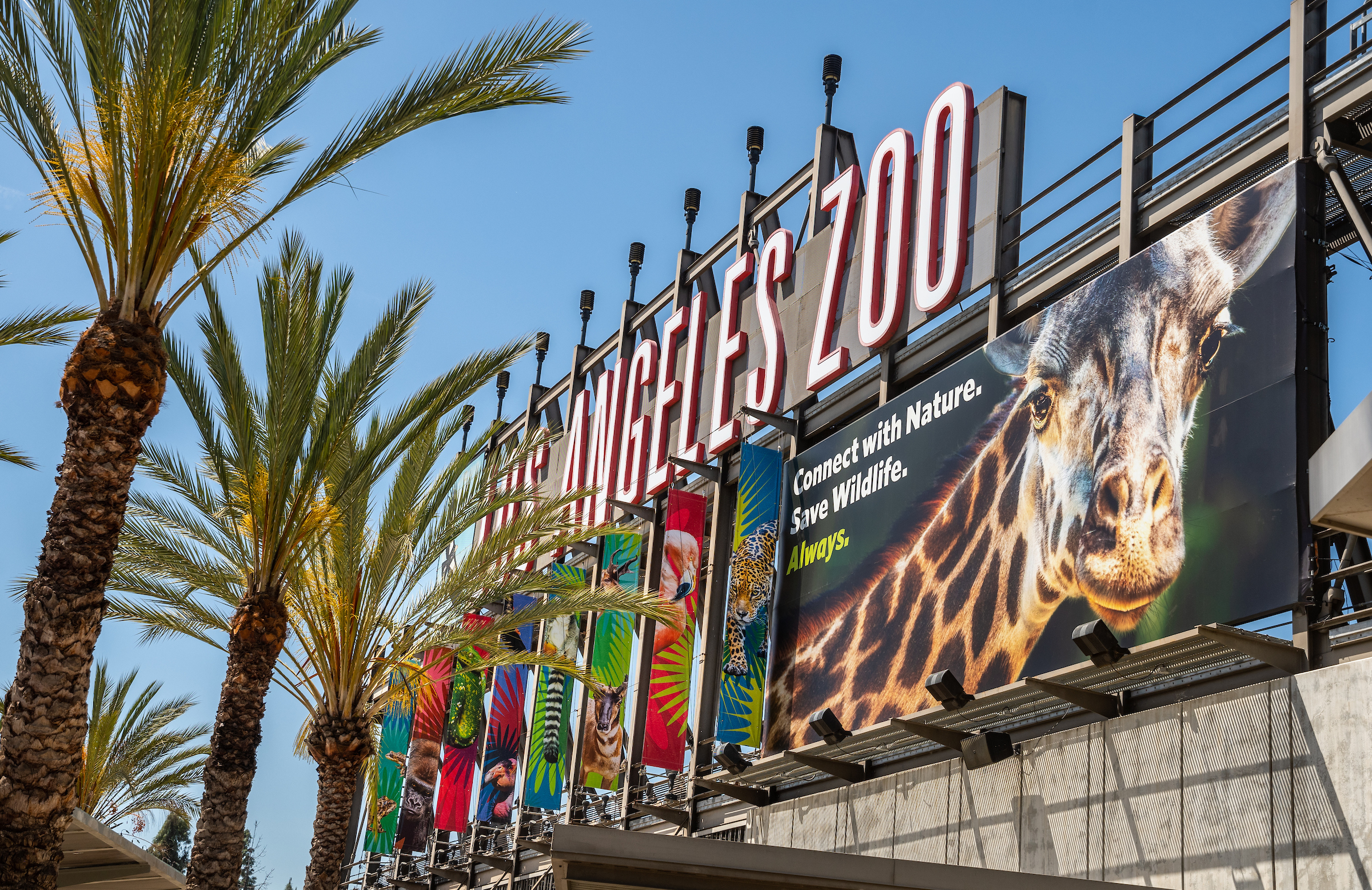by Autumn Hilden

Last month, our resident koalas, female Maya and male Burra, took the next step toward fulfilling their biological destinies when the two were introduced to live together as partners in the koala habitat. From the bellowing to the branch shaking to the sloth-like inverted tree hang, find out directly from Senior Animal Keeper Kevin Gorowski how everything went down.
Hi, Kevin! What can you tell us about Burra and Maya? How do they behave that is typical for or different from koalas in general?
Maya is just over two years old and was born at the Cleveland Zoo. She’s reserved and enjoys her personal space. She used to live predominantly indoors, so coming here and living outside 24/7 was a big change for her. She is not fond of the cold or the rain and will often not eat as much when that happens. In true koala form, she is very picky and likes her food and home just so—and the keepers go to great lengths to make her happy.
Burra is nine years old and came to us from San Diego Zoo. He’s a very relaxed koala and is not easily offended. He was beloved by his former keepers, and we can clearly see why. He has a hearty appetite, he loves to scent-mark all the perching [a behavior typical of male koalas], and he has a wonderful bellow vocalization when he gets excited.
Also, as we know, koalas sleep a tremendous amount, but when they wake up they are busy! Our pair like to come to the ground and trot around the habitat in the middle of the night. And I am always amazed when they jump from tree to tree.
How were the two introduced to each other?
Once Burra was cleared from quarantine, he was moved down to the koala habitat so he could live adjacent to Maya. They stayed separate for a bit to allow the keepers to get to know Burra, develop a routine, and to see how each koala responded to having a new neighbor. When the koalas and keepers were comfortable, we allowed access for Burra to formally introduce himself to Maya in her habitat. Burra was so fired up being in her territory that he scent-marked the perching and immediately set about exploring the habitat, trying to track down Maya. He bounded up the branches and found her within the A-frame structure. Maya was less than enthused with his arrival, and, after typical koala pleasantries were exchanged (a mix of vocalizations, body posturing, paw swats, and firm nips on the back), they found nearby perches to lounge on and rest near each other for the day.
What challenges did you anticipate from the process?
Despite koalas looking calm and relaxed, they can be very spicy when they want to be. The worry often is whether either koala will be overly assertive and potentially nudge the other off the perching, bite a little too hard, or really scratch the other with their impressive claws. The keepers were right there to watch each koala and make sure behaviors didn’t escalate too much.
How did you prepare for those potentials?
The keeper staff really studied each of the koalas and tried to figure out their preferences. We introduced the pair to each other in a space with their favorite food available and desirable resting places with easy-to-negotiate perching for their safety. When the introductions started, keepers were positioned under the pair in case one of the koalas happened to fall; the plan was to catch or reposition the koala in a better spot in the branches if that occurred. But it didn’t! After the initial introduction, the keepers were watching the pair closely throughout the day to see if they were cohabitating. If things had not gone smoothly, we would have separated them and attempted another introduction at a later time. Thankfully it went pretty smoothly, and they settled in by the afternoon.
Were there any other things that arose during the meeting process?
Interestingly enough, Maya’s preferred position when meeting Burra was to hang under the perching like a sloth. It was unusual for sure! But it made her comfortable so she could keep a watchful eye on him and defend herself easily. Burra was a little stumped on how to say hello, but he eventually worked his charm with her.

What is the plan for them now that they are together?
Both have shown a lot of interest in each other, which is very promising. If we have a koala joey, we hope Burra will remain with Maya and her offspring in their habitat.
What can guests expect to see when they visit the koalas this summer?
Probably our koalas taking a well-deserved afternoon siesta! Burra really likes to lounge in the tree in the front far right of the habitat, and he typically only eats overnight. Maya likes to hang out and snooze in the large A-frame structure on the left side of the habitat.
How did you come to work with koalas at the L.A. Zoo?
Early in my zookeeping career I learned all about various browse [leafy food] species, from identification to harvesting. Working with koalas, your time spent is half doing animal care and half as a eucalyptus specialist, so my previous experience turned out to be incredibly useful. But I started originally at the L.A. Zoo in the Aviary section, part time, and was able to secure a full-time position in the Australia section as the primary koala string keeper soon thereafter. I hit the ground running and had a great team of keepers to train and guide me in all things koala, marsupials, and eucalyptus. I worked with the koalas for about a year before moving about the Zoo, then returned as the section senior animal keeper. In that role, I work with koalas again and have learned even more about the species. Like koalas have a cute habit of wanting to smell your hair. So often times when you approach them, the polite thing to do is let them get a few sniffs in before you go about your work.
And as someone who works with them directly, what are your hopes for Burra and Maya?
Like all the animals here at the Zoo, I hope that they are healthy and content. A continued hearty appetite is always appreciated, and, since this pair finally is together, we all hope they produce viable offspring and continue the decades-long conservation legacy of koalas being born and cared for here at the L.A. Zoo.

